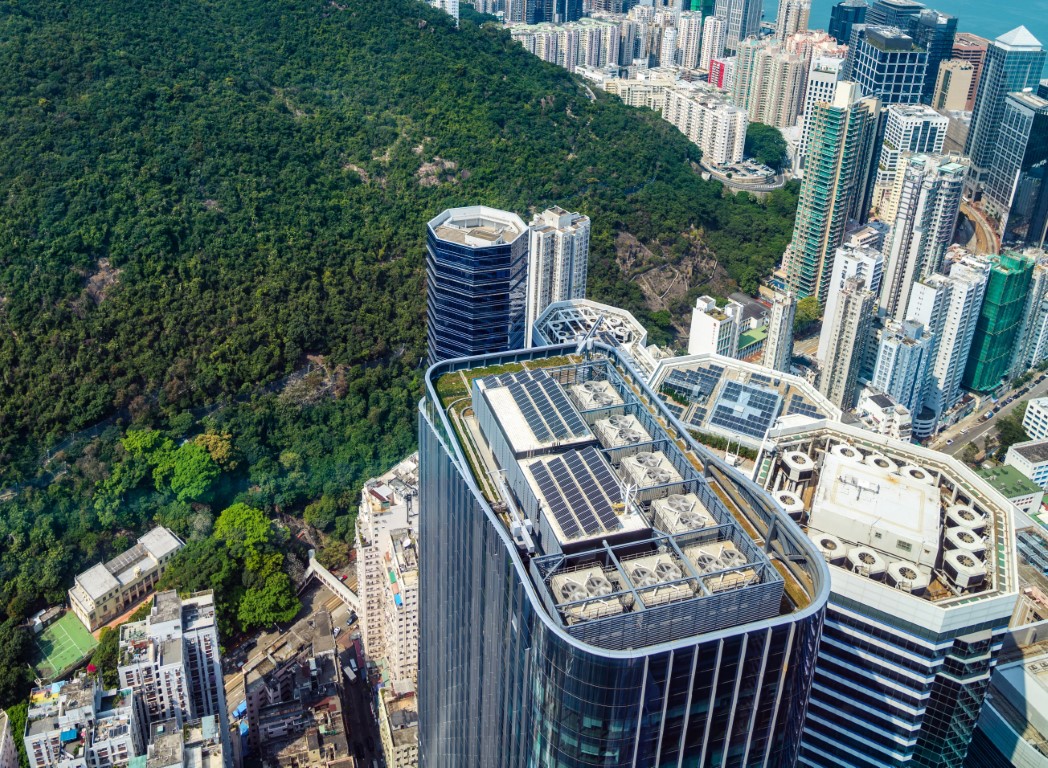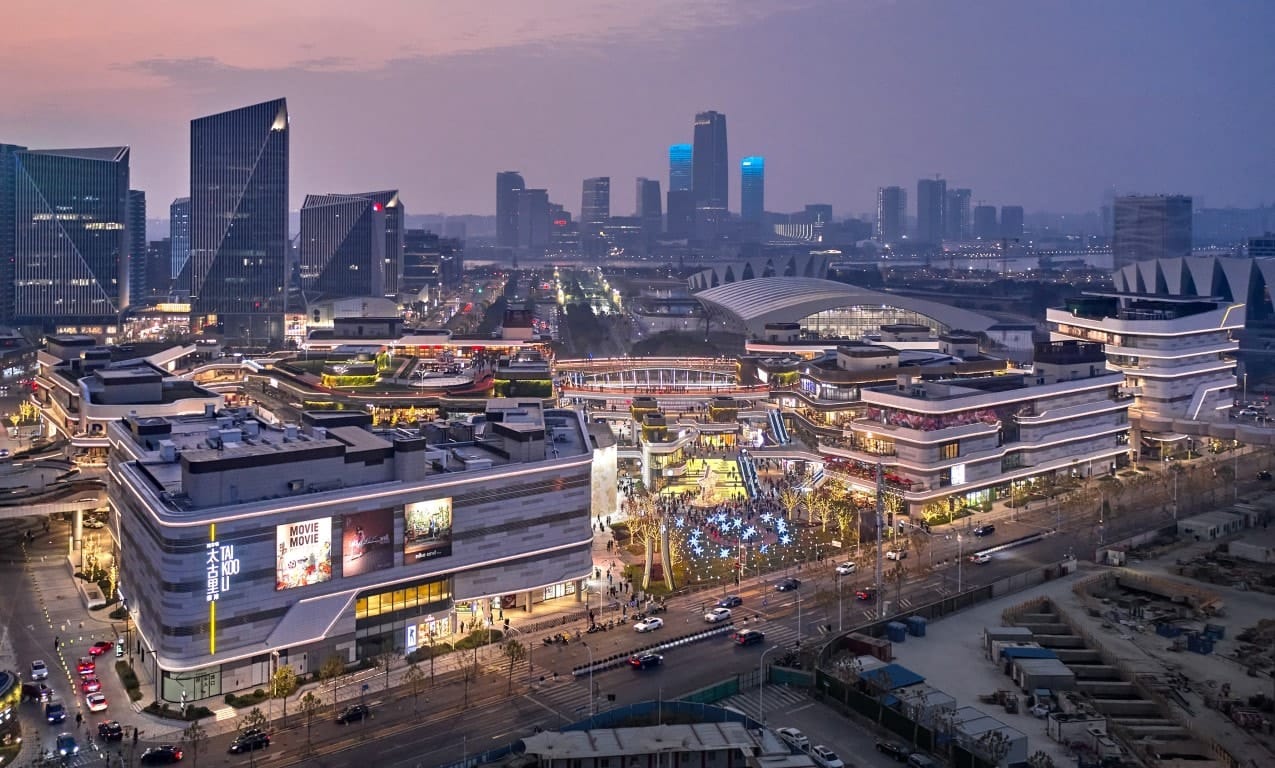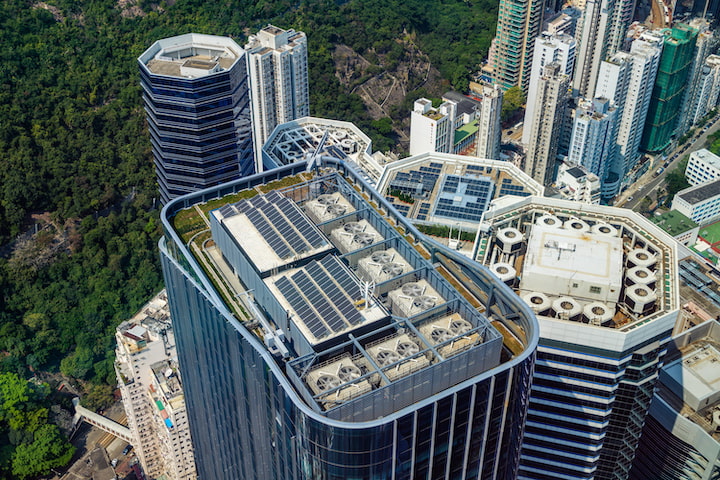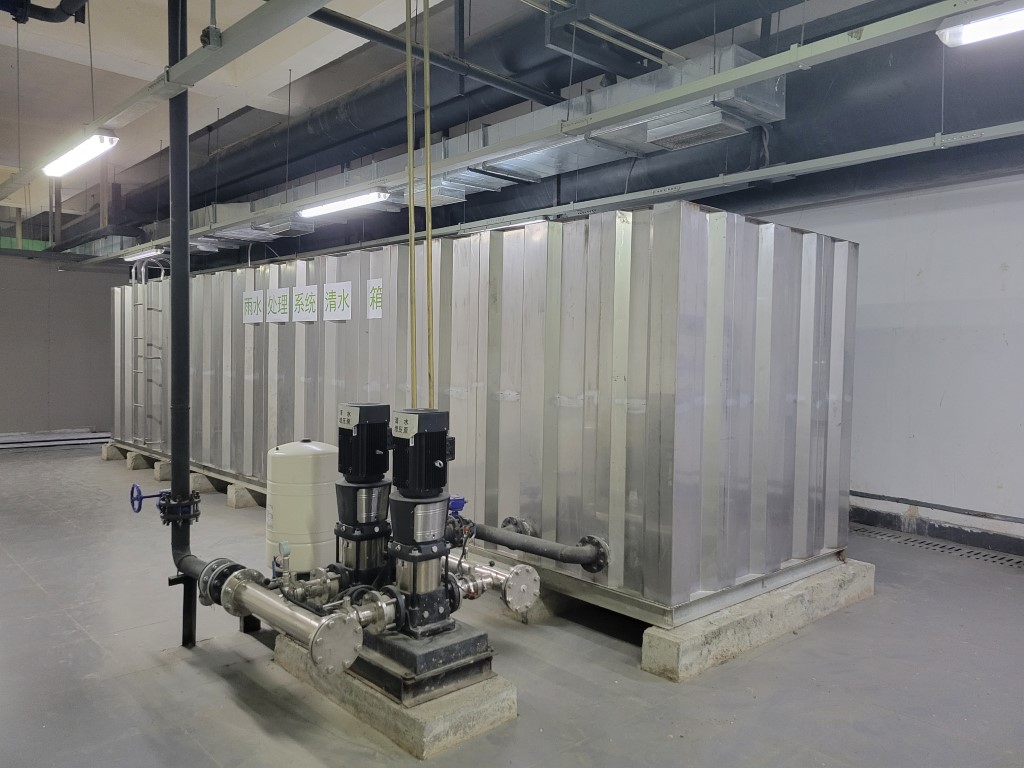Our comprehensive climate risk assessment identifies the key risks posed by climate change to our business operations and the business opportunities that may arise from new climatic conditions.
Physical Risk Assessment
This consists of asset-level modelling of both the acute and chronic physical risks associated with various climate scenarios, presented in selected timeframes from the immediate term to the distant future – 2030, 2050, and 2100. It also includes detailed asset-level assessments that evaluate individual buildings’ sensitivity and adaptive capacity to the potential effects of the identified climate risks.
The analysis identified that overall, there are low to moderate levels of risk for flooding, heat stress, water stress and extreme wind for our global portfolio in all assessed climate scenarios. These risk levels are attributed to the relatively robust adaptive capacity and mitigation measures we have integrated into our buildings.
We also identified short- and mid-term measures for individual buildings to mitigate risks and build resilience across our portfolios. Examples include:
- Upgrading flood protection measures and alert systems
- Improving chiller efficiency
- Regularly inspecting glass façades
- Installing smart monitoring systems
Some of these resilience measures will also be incorporated into the planning and design stages of new developments to ensure our assets will continue to be resilient under different future climate scenarios.
With the announcement of the Company’s HKD100 billion investment plan for new projects in the Chinese Mainland and Hong Kong, it is of the utmost importance to expand our climate risk assessment work to cover new project sites. This will allow us to critically evaluate the potential climate exposure of these developments and take early strategic action to incorporate climate resilience into the projects’ design and planning stages.
After the release of the Sixth Assessment Report (AR6) by IPCC in 2022, we immediately began to update our climate models to incorporate the latest available climate science.
We will also perform relevant deep-dive hazard modelling for selected projects, such as urban drainage modelling, riverine flood modelling and coastal hydrodynamic modelling, using outputs from climate models.
The results will be analysed to generate climate-related parameters and design concepts for projects in order to help design teams communicate and channel climate-related considerations into their designs.
Assessment of Transition Risks and Opportunities
This is a comprehensive review of global, national and local government policies, including Hong Kong’s Climate Action Plan 2050, released in 2021, as well as regulatory, market and technological trends based on different climate scenarios involved in the global transition to a low-carbon economy.
We identified a number of risk and opportunity drivers that may have a financial impact on our business under three different climate scenarios: the “Net Zero Scenario” (1.5°C); the “Paris Consistent Scenario” (2°C); and the “Hot House World Scenario” (3°C). The drivers include tightened building energy codes and guidelines, increased market demand for green and energy-efficient properties and climate-resilient properties.
Heat map showing the estimated annual impact of climate-related risks and opportunities under different climate scenarios in 2030
Risks | Opportunities | |||||
|---|---|---|---|---|---|---|
Risk / Opportunity Driver | 1.5°C Scenario | 2°C Scenario | 3°C Scenario | 1.5°C Scenario | 2°C Scenario | 3°C Scenario |
Tightened building energy codes and guidelines | ||||||
Introduction of carbon pricing in operating markets | ||||||
More stringent public disclosure requirements | ||||||
Increased market demand for climate resilient properties | ||||||
Increased market demand for green and energy efficient properties | ||||||
Increased tenant demand for energy efficiency and data transparency | ||||||
Growing investor demand for green and low-carbon finance and investment | ||||||
Potential increase in insurance premiums | ||||||
Increased exposure to reputation and litigation risks | ||||||
Greater adoption of low-carbon construction materials | ||||||
Utility supply and cost | ||||||
Increased adoption of green and low-carbon technology | ||||||
Increased adoption of renewable energy | ||||||
Risk Level
Lower risk
Moderate risk
Higher risk
Lower opportunity
Moderate opportunity
Higher opportunity
Not applicable
Heat map showing the estimated annual impact of climate-related risks and opportunities under different climate scenarios in 2030
Risk / Opportunity Driver | Tightened building energy codes and guidelines | Introduction of carbon pricing in operating markets | More stringent public disclosure requirements | Increased market demand for climate resilient properties | Increased market demand for green and energy efficient properties | Increased tenant demand for energy efficiency and data transparency | Growing investor demand for green and low-carbon finance and investment | Potential increase in insurance premiums | Increased exposure to reputation and litigation risks | Greater adoption of low-carbon construction materials | Utility supply and cost | Increased adoption of green and low-carbon technology | Increased adoption of renewable energy | |
|---|---|---|---|---|---|---|---|---|---|---|---|---|---|---|
Risks | 1.5°C Scenario | |||||||||||||
2°C Scenario | ||||||||||||||
3°C Scenario | ||||||||||||||
Opportunities | 1.5°C Scenario | |||||||||||||
2°C Scenario | ||||||||||||||
3°C Scenario | ||||||||||||||
Risk Level
Lower risk
Moderate risk
Higher risk
Lower opportunity
Moderate opportunity
Higher opportunity
Not applicable
Based on the analysis, our current business and sustainability strategies will allow us to effectively manage the identified transition risks and capture the identified opportunities during the transition to a low-carbon economy. These strategies include:
- 1.5°C-aligned science-based targets to drive long-term carbon reduction
- Investment in, and development of, certified green buildings with best-in-class energy efficiency and climate resilience
- Investment in renewable energy measures throughout our portfolio
- Wide application of innovative green technologies
- Commitment to green financing
- Engaging our supply chain, tenants and other relevant stakeholders in climate resilience and sustainability initiatives
We also conducted a quantitative assessment of the potential financial impacts of key identified transition risks and opportunities that will inform our risk management and strategic planning.
For more information, please refer to our Climate-related Financial Disclosures.
See More In










